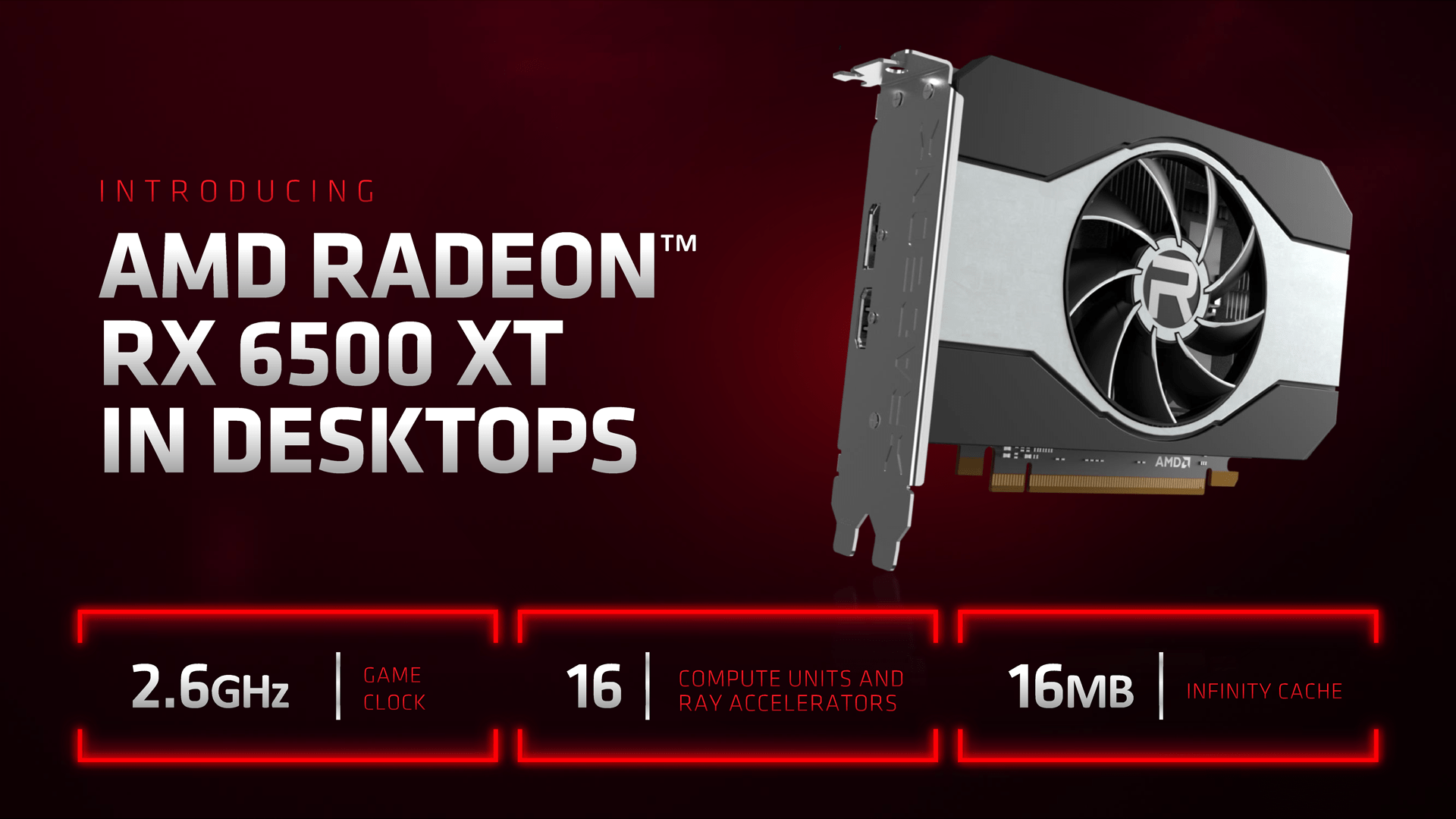On the occasion of the release of the Radeon RX 6500 XT, we have summarized what potential applicants may miss on this card. These are basically all the features that result from the fact that the GPU Navi 24 originated as a supplement to the APU Rembrandt. So what is it equipped with Rembrandt, it may not support it Navi 24. So video compression support has been dropped, the standard h.264 / h.265 / VP9 format is supported for video playback, but not AV1, and only two (not three) independent outputs are available. In notebooks, where the chip will sit next to it Rembrandt, these tasks are handled by the APU, so there was no reason to duplicate the silicon that would remain unused.
In the desktop, the customer has a choice of three options:
1. He does not mind the absence of these elements
From a pragmatic point of view, this will be the case for most customers. It’s hard to get a performance card to stream gaming experience to YouTube, so the integrated video encoder can’t be expected to be a problem for most real buyers. Furthermore, the user who buys the cheapest product of the entire generation does not plan to power a three-monitor high-end system. In this way, AMD tried to reach customers during the first generations of Eyefinity, when it also offered three outputs in the low-end. It had zero impact on low-end sales, as the three monitors are simply not part of the low-end assemblies. The biggest pity can be the absence of AV1 support – on the other hand streaming service – if the terminal does not support some format – they usually offer another, widespread (h.264, VP9), so the biggest tax is ~ 25% higher bitrate stream. Which can bother anyone who pays for the transferred data.
2. The absence of these elements bothers but can be addressed
A user who wants graphics for some reason, but also has a problem with one of the missing technologies, has the option to pair the card with a processor with integrated graphics that offers the element. Virtually whatever solves output to a third monitor, most address support for h.264 / h.265 and Alder Lake or the upcoming APU Rembrandt solves AV1 (as it will be Zen 5, we don’t know yet).
3. The absence of these elements bothers and the user is not interested in solving it
To summarize some of the discussion posts evaluating the Radeon RX 6500 XT, then AMD should have issued a video compression card that supports AV1 playback, with a wider PCIe bus, 8GB of memory and three video outputs. I would like to point out to these users that AMD’s dream product has already been released, it is called Radeon RX 6600 XT and it has been available since last summer. The meaning of two cards with the same parameters remains shrouded in mystery.
If AMD dares to release a product with these parameters, it is, according to some, a mark of Integration. However, just remember a bit and it turns out that there is nothing new about the configuration of the Radeon RX 6500 XT. Basically the same situation was there at the end of 2013, when there was a Radeon R7 250. This graphics card built on a chip Holland… Well judge for yourself, I’m copying a table from an 8 year old article:
Kernel Holland used on the Radeon R7 250 did not support video compression, did not support three outputs, and did not support DisplayPort (HDMI only). It was the same case – graphics designed to pair with the APU, which was equipped with these features. Did AMD integrate back in 2013?
Similar products have been here before, only in short the way of cutting met the requirements of the time. Some had a single video output, others had the smallest available memory module, which functioned only as a buffer (cache) for data stored in RAM (HyperMemory).
I like the GPU Navi 24 is thus the result of two simple facts – first, the configuration for which it is primarily intended (APU systems) Rembrandt) and the simple fact that it is a small chip. AMD since the aforementioned GPU Holland she did not issue any chip for the lowest price segment, she left this segment for a generation to Nvidia. Add to this the fact that 4 GB of GDDR6 memory currently costs $ 48 (wholesale price excluding VAT), and for this amount 10 years ago the card manufacturer purchased a GPU for the performance segment on the border of higher mainstream and high-end, or memory for the most expensive high- end. A graphics card equipped with memory at a cost of ~ $ 50 was sold ten years ago for a final price of over $ 300, so not much changes here either.
The Radeon RX 6500 XT is simply the product for – in the current distorted market – the lowest price range. Could it have been done better? We could answer yes, if any of the competitors offered anything better at that price. But it did not happen. We know how it turned out with the Intel DG1. We do not know what will happen with the Nvidia GeForce RTX 3050, but according to reports from hardware manufacturers, it is unlikely that the real market price could go below $ 400. If this is confirmed, its price / performance ratio will not be better, to put it bluntly.
AMD has managed to release a graphics card which, unlike all other products of the current generation, does not cost 2-4 times more than the recommended price, but only 1.5-1.6 times more. The customer can take it or leave it. Which is progress. There was nowhere to take a number of products released in the last year, because shipments often ended up being dismantled by miners in warehouses before they reached retail stores.
–


